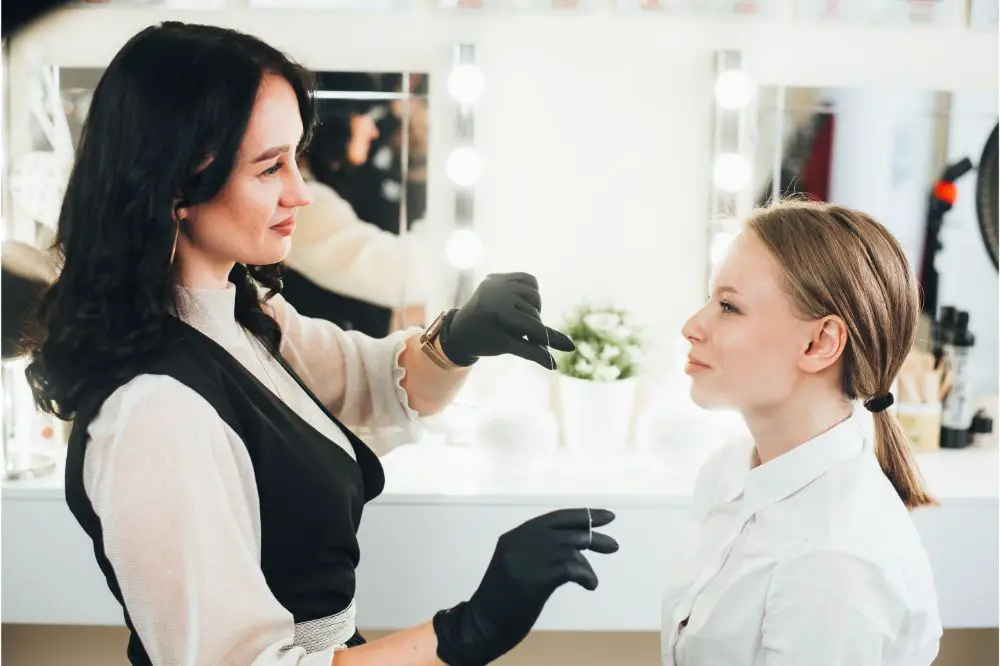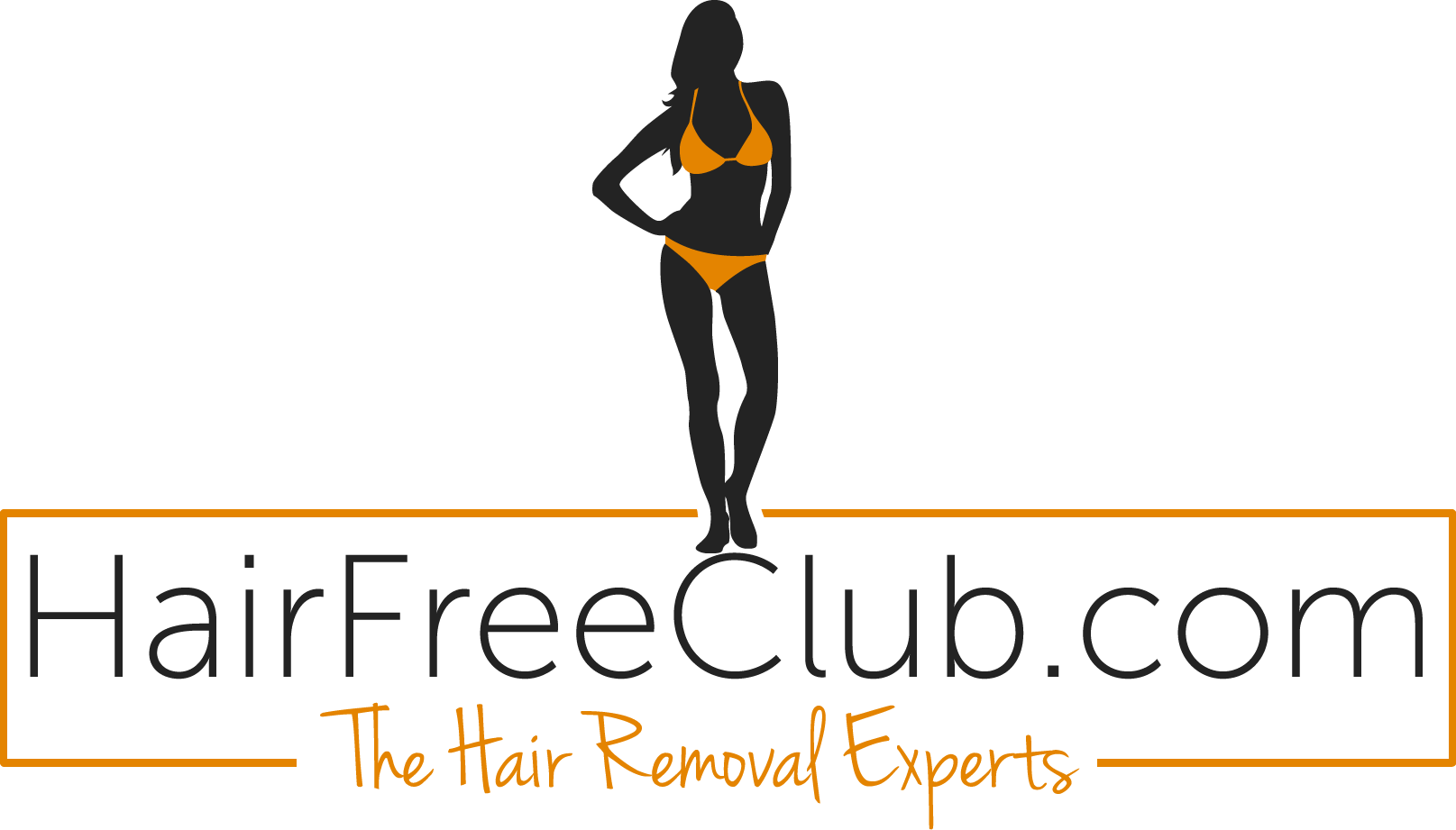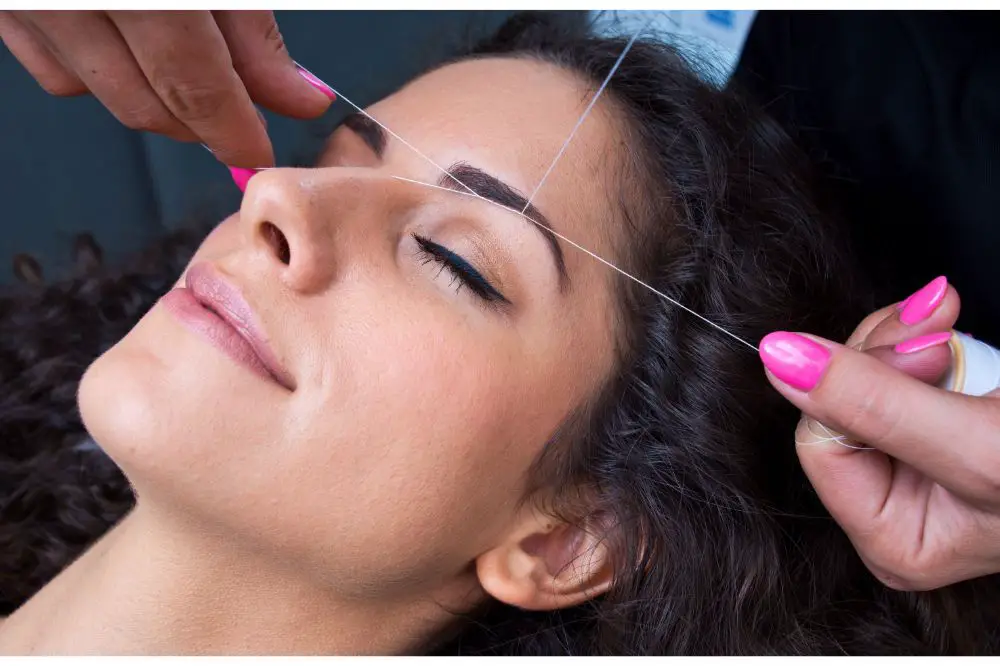Threading hair removal is an ancient hair removal technique used in many parts of the world. It is a chemical-free method of removing facial hair, as well as other parts of the body. It involves using a thin cotton thread that is twisted in a loop and rolled over areas with unwanted hair. The cotton thread is then twisted in the opposite direction, trapping the hairs and removing them from the root. Threading is a popular technique for shaping eyebrows and other facial hair. It’s also an effective way to remove hair from the upper lip, chin, cheeks, and forehead. Threading is a sanitary and efficient way to remove unwanted hair and can be done at home or at a salon.
Benefits of Threading Hair Removal
Threading hair removal has a number of benefits that make it an attractive option for many people. First of all, it is a relatively quick and easy process. Unlike waxing and other hair removal methods, threading can be completed in a matter of minutes. It is also more precise than other methods. This means that it can be used to define brows and remove hair from very small, precise areas. Threading is also less painful than waxing, which is an advantage for those with low pain tolerance. Furthermore, threading can be used to remove fine hairs that other methods may struggle with. It is also hygienic, as it does not require the use of any chemicals or creams. Finally, threading is suitable for all skin types and does not cause irritation, unlike waxing.
How Threading Hair Removal Works
Threading hair removal is a relatively straightforward process that is surprisingly effective. It works by using a thin cotton thread to gently pull out individual hairs from the root, resulting in a clean and precise line. The thread is doubled up and twisted, creating a loop that is then used to catch and pull out individual hairs. It’s quick, relatively painless, and can be used to remove hairs from the eyebrows, upper lip, chin, and other areas.
Threading can be done by an experienced technician at a salon, spa, or beauty store. The technician will begin by using the thread to create a shape or design on the face. This could be anything from a natural eyebrow shape to a more sculpted arch. Once the desired shape is created, the technician will use the thread to pull out any remaining hairs that don’t fit the shape. This process can take anywhere from 5 to 15 minutes, depending on the area being treated.
The technician may also use a pair of tweezers to pluck out any hairs that the thread may have missed, and then use a cooling gel to soothe the skin. It’s important to note that threading can be a bit uncomfortable, especially for those with sensitive skin. However, the discomfort should be minimal and should only last for a few minutes.
What To Expect When Getting Threading Hair Removal
When getting threading hair removal, there are a few things you should know before your appointment. First, you should make sure that your skin is thoroughly cleaned before you arrive. This will help reduce any discomfort you may experience during the procedure. Be sure to remove any makeup or lotion, and don’t forget to moisturize afterward.
At the appointment, your esthetician will start by stretching the skin around the area where the threads will be used. This allows the esthetician to have better control over the area, which helps them to remove the hair more effectively. Then, the esthetician will use a thin cotton thread to quickly and precisely twirl around the hairs they want to remove. This twirling motion traps and pulls out the hair from the follicle.
The entire procedure usually takes around 15 to 20 minutes. Depending on the size of the area being treated, it may take longer. Threading is usually considered a relatively painless procedure, though it can be a bit uncomfortable. After the procedure, some people may experience slight redness or irritation, but this should subside within a few hours.
Threading is considered a safe procedure, but it’s important to find an experienced and reputable esthetician. They should be knowledgeable about the procedure and have a clean and sterile work environment. Be sure to ask for references or look for reviews online to make sure that you’re going to a reputable place.
At-Home Threading Hair Removal
Threading your own hair may sound intimidating, but with a few simple steps and a bit of practice, you can easily thread your own hair in the comfort of your own home. To do this, you will need a spool of thread, a mirror, and some tweezers. Before you begin, make sure to tie your hair back and away from your face.
Begin by looping a section of the thread around your middle and index fingers, leaving enough slack in the thread so that you have enough to twist it around your fingers. Then, hold the skin around the area you want to thread taut with one hand and use the other to slowly manipulate the thread with your fingers. Start at one end of the area and slowly pull the thread towards the other end, trapping the hairs in the thread as you go. When you get to the end, gently tug the thread to remove the trapped hairs.
It is important to be careful and gentle when threading to avoid any cuts or scrapes on the skin. Additionally, you must ensure that the thread is held tightly and not too loose, as this will create inconsistencies in the results.
At-home threading can be a great way to remove unwanted hair, as long as you take your time and practice the proper technique. If you are unsure of how to properly thread at home, it is always best to visit a professional to learn the correct method.

Aftercare Tips for Threading Hair Removal
Aftercare for threading hair removal is important for maintaining the results and avoiding skin irritation. Immediately after the procedure, it is important to apply a cold compress to the area that was treated. This helps to reduce any inflammation or redness. Additionally, it is important to avoid sun exposure in the treated area for at least 24 hours after threading. This can help to prevent skin irritation.
An oil-free moisturizer should also be applied twice daily to the treated area. This helps to ensure that the skin remains hydrated and can help to reduce any itchiness. It is also important to avoid any activities that may cause excessive sweating for the first 24 hours after threading. Sweating can cause skin irritation and can also lead to breakouts.
To reduce the risk of infection, it is important to avoid touching the treated area with dirty hands. Additionally, it is important to avoid using any harsh or exfoliating products on the treated area for at least 48 hours after the procedure. This helps to ensure that the skin remains healthy and can help to reduce the risk of infection or irritation.
Finally, it is important to avoid any activities that can cause the hair to be pulled out or rubbed against the skin. This can cause irritation and can also lead to ingrown hairs. Taking proper care of the skin after threading hair removal can help to ensure that the results are long-lasting.

